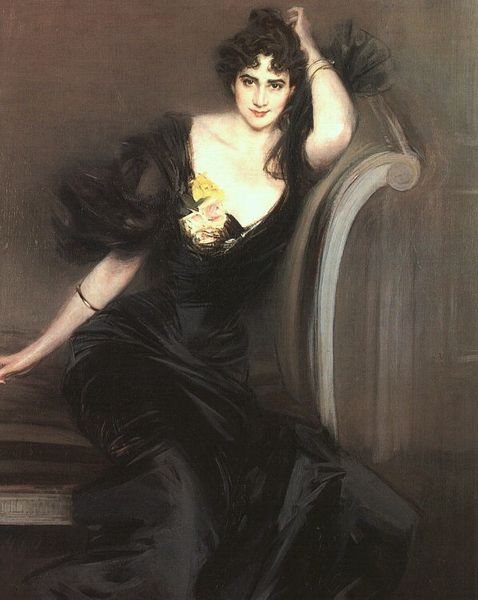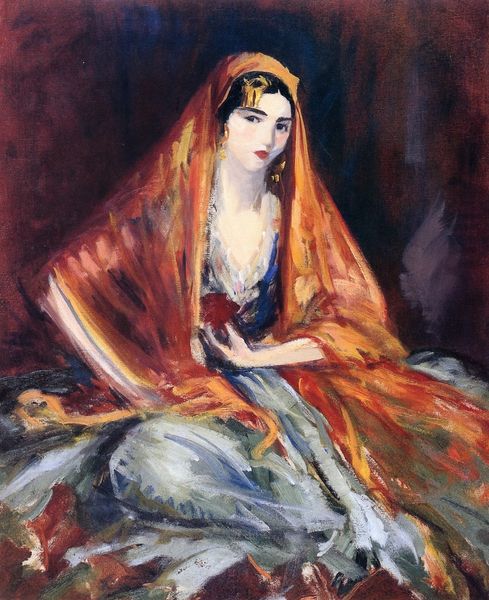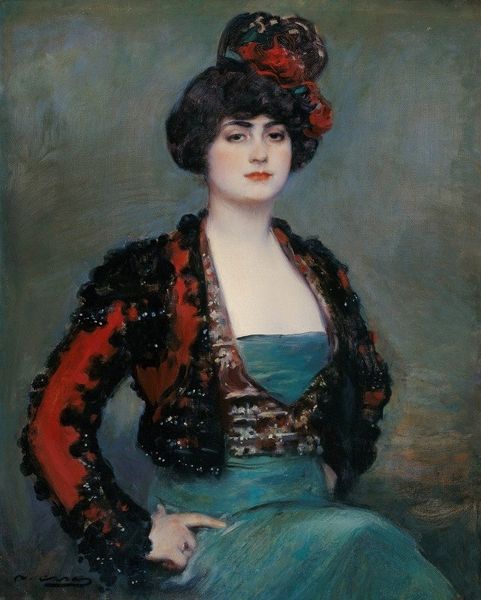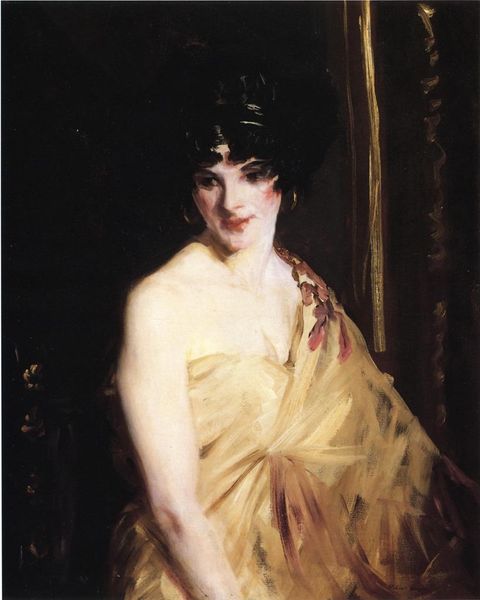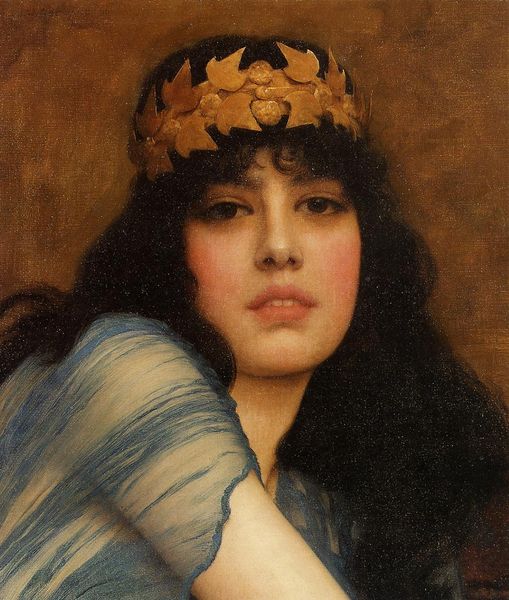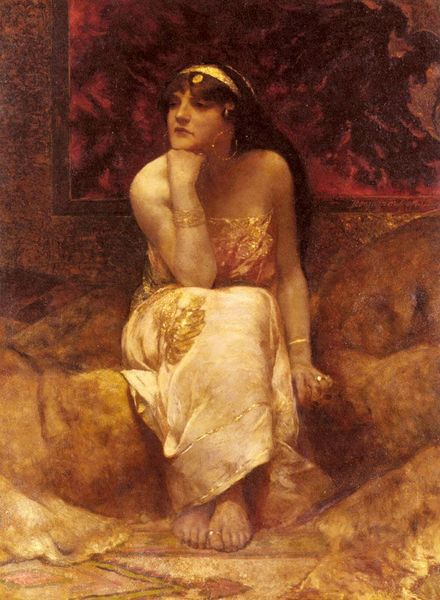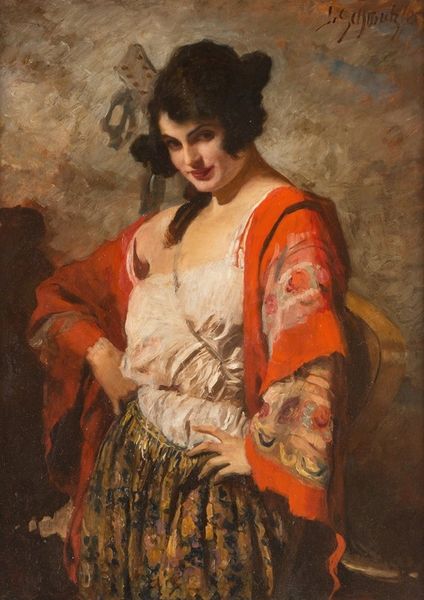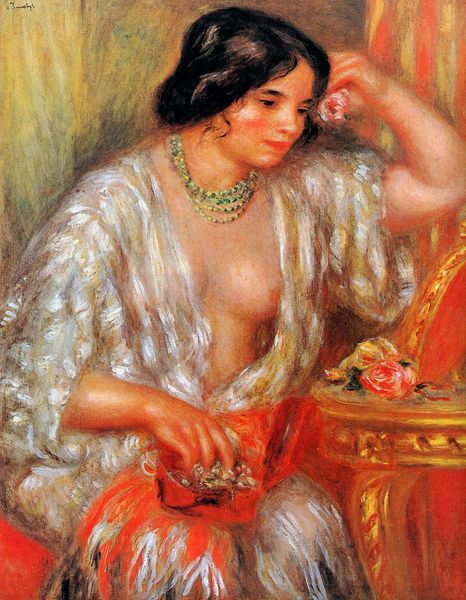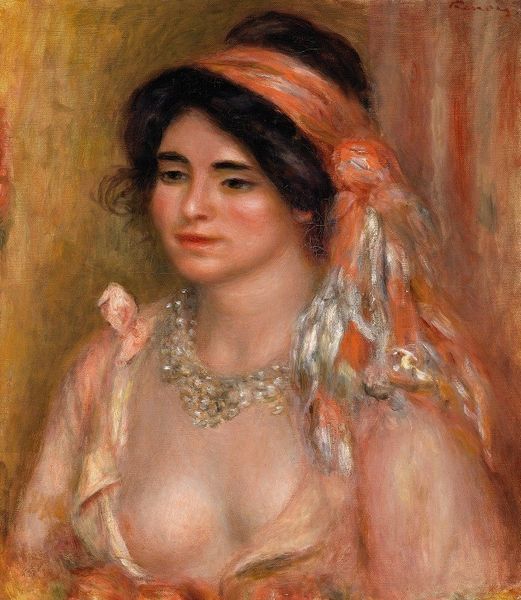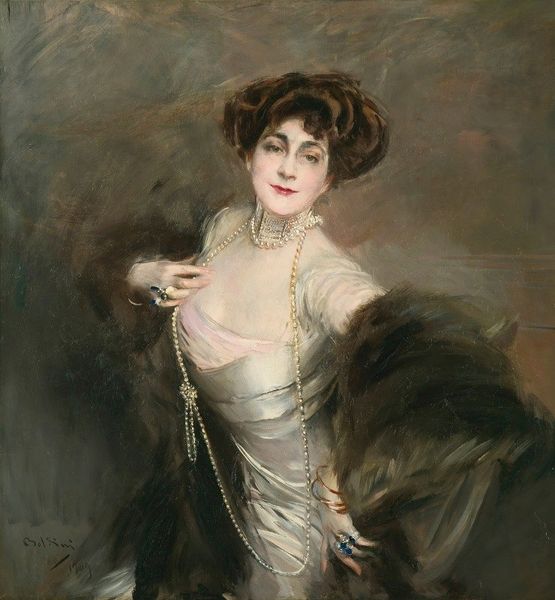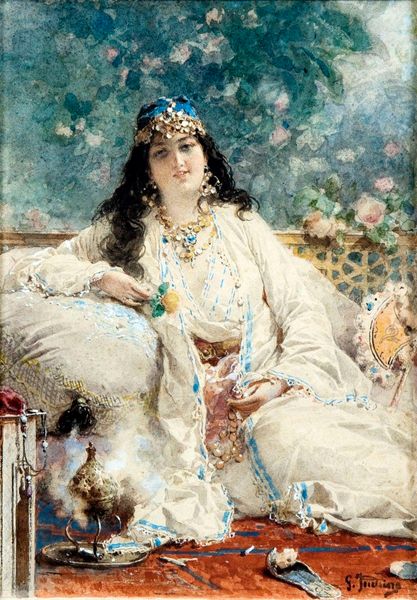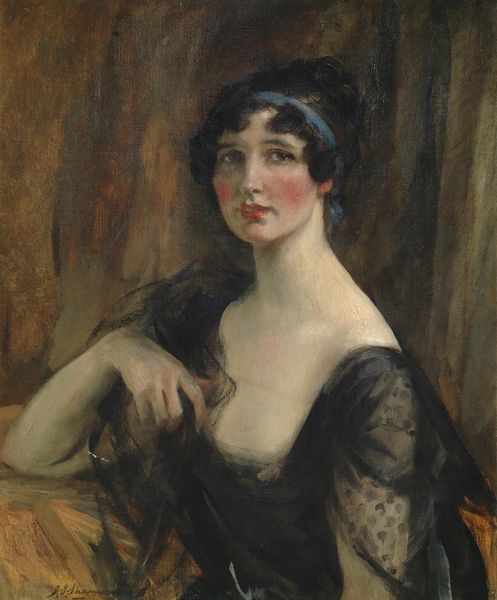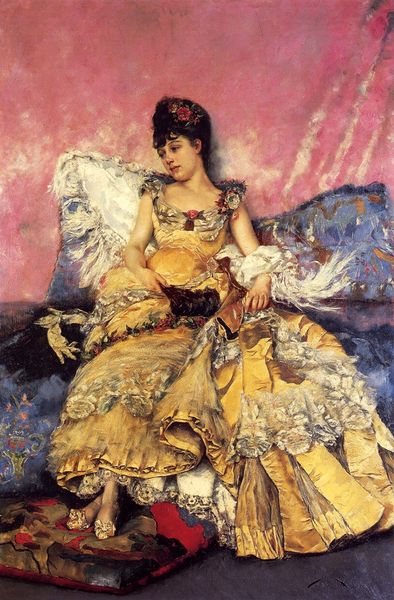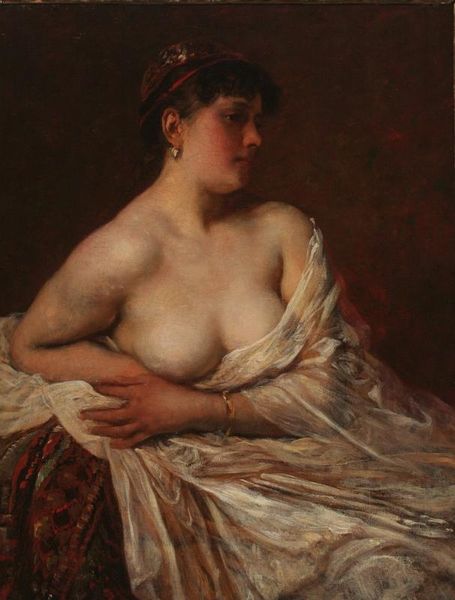
oil-paint, impasto
#
portrait
#
oil-paint
#
oil painting
#
impasto
#
orientalism
#
ashcan-school
#
genre-painting
#
portrait art
Copyright: Public domain
Curator: This is Robert Henri's "Dancer of Delhi," painted in 1916. Henri was a leading figure in the Ashcan School, which often depicted everyday urban life, though this subject is a clear departure from that norm. Editor: Immediately, what strikes me is the thick, almost sculptural quality of the oil paint, especially in the red fabric. It looks like you could almost reach out and feel the texture. The process feels very present. Curator: Indeed, Henri’s bold brushstrokes contribute to the immediacy. It’s an orientalist painting, and like many from that genre, it presents an exoticized version of another culture. The woman is not truly a dancer from Delhi, but rather an imagined representation. We must consider that public fascination with the 'Orient' influenced its creation and reception. Editor: And those textiles! The juxtaposition of the rough impasto with the suggestion of delicate beads and sheer fabrics is intriguing. Are they actually delicate, luxurious materials, or are we being presented with merely the *idea* of luxury and Eastern opulence constructed from rough brushwork? Curator: That's a keen observation. It challenges the authenticity and highlights how orientalism constructs fantasy. The setting—probably a New York studio rather than Delhi—adds to that sense of manufactured exoticism. The museum is also a part of this chain reaction as a stage for it. Editor: Thinking about the Ashcan School, though this is certainly a 'portrait,' you can't ignore it as genre painting in a different mode. It shares with it a rough, direct approach to materials and the gritty social awareness which translates to portraying the world outside New York. Curator: I think the genre’s conventions play into the fantasy Henri's constructed; this allowed a contemporary audience to explore their prejudices. It’s also vital to recognize that museums often play a role in reinforcing societal views. Editor: To your point, I have been in many studios and never once looked so lavish and decorative while being very hard at work with volatile, often fugitive materials, tools, and processes. All the labour needed to produce her apparel seems effaced and glossed-over for artistic, maybe moralising effect. Curator: Ultimately, "Dancer of Delhi" makes us consider the artist's choices, the materials used, and how cultural perceptions are formed and perpetuated by the work itself. Editor: Absolutely. Reflecting on its construction and the social forces at play encourages us to look deeper, past the surface, and beyond that seductive red.
Comments
No comments
Be the first to comment and join the conversation on the ultimate creative platform.
